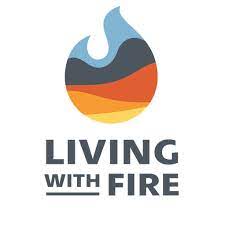Wildland Urban Interface
View webinar recording (58:54).
In this webinar from Fire Adapted Communities NM, knowledgeable fire and forestry professionals from New Mexico and Colorado introduce an important fire risk and readiness tool: Home Hazard Assessments (HHAs). Topics include guidance and digital and printed tools to complete HHAs, local partners who can guide the process or travel to complete HHAs on-site alongside property owners and residents, how different Assessment programs are structured, why HHAs are an important fire readiness tool, how county ordinances and insurance providers can influence the need for HHAs, and what opportunities may open up as a result of completing them.
View factsheet.
Step by step home hazard assessment, preparedness, and evacuation options.
View article.
Compared with other models, the escape routes planned by the final improved model not only effectively avoid wildfires, but also provide relatively short travel time and reliable safety. This study ensures sufficient safety margins for firefighters escaping in wildfire environments. The escape route model described in this study offers a broader perspective on the study of escape route planning.
Webinar recording.
Learn what agencies mean when they reference the WUI, its defining characteristics, and the unique challenges of living in these areas, particularly in Nevada. Discover the responsibilities that come with living in the WUI and explore the wealth of resources available to mitigate wildfire risks. Whether you’re a resident, stakeholder, or rightsholder, watch to gain valuable insights and actionable strategies for building safer, more resilient communities in the WUI.
Webinar recording.
The complex interactions between atmospheric and fire-induced winds are a persistent obstacle to accurately predicting wildfire front behavior. There are a multitude of wildfire spread models, with one primary distinction being the level of fire-atmosphere coupling in each. Coupling of fire-induced winds and ambient winds in numerical models is carried out through linking the heat and mass fluxes from the wildfire with the surface energy fluxes in the atmospheric model. The challenge in this coupling is increased with the introduction of heterogenous surface conditions, e.g., terrain, canopies, buildings. To better understand the dynamic coupling of fire-induced winds and atmospheric winds at microscales, the fast-response wildfire model QES-Fire was used to study the effects of fire-induced winds near structures, and the relative importance of the momentum deficits caused by canopies and structures on fire-induced winds.
View article.
Consider several of the most devastating fire disasters of the last century. In August 2023, the wildfire-initiated urban conflagration of Lahaina, Hawaii, damaged or destroyed more than 2,200 structures and killed 98 people. In December 2021, the Marshall Fire sparked conflagrations in Superior and Louisville, Colorado, destroying 1,084 structures and killing two. In September 2020, the Almeda Drive Fire in the communities of Talent and Phoenix, Oregon, destroyed 2,600 homes and killed three. In November 2018, the Camp Fire initiated ignitions in Paradise, California, destroyed 18,804 buildings, and killed 85. In November 2016, fires spread through Gatlinburg and Pigeon Forge, Tennessee, destroying 2,460 structures and killing 14. These fire disasters burned in vastly different environments. But all had human causes (power lines contributed to at least three), were near communities, occurred during extreme wind events, then inflicted their damage as urban conflagrations. Almost all destruction occurred within the first 12 hours after ignition. These fires immediately overwhelmed wildland and structural firefighting efforts, which were largely ineffective during the initial and extreme phase of the fire. Further, all these fires occurred since 2016. It’s clear that structures and whole communities were vulnerable to ignition and burning—irrespective of what initiated the fires.
View story map.
The wildland-urban interface (WUI) is the area where structures and other human development intermingle with wildland vegetation or where housing is in the vicinity of large areas of wildland vegetation. This StoryMap provides data on two trends from 1990 to 2020: the expansion of WUI area and the growth in housing in WUI areas.
Webinar recording.
Recent destructive wildfires in northern California provide an opportunity to investigate how different factors influence home survival. We conducted an analysis of the 2018 Camp Fire, obtaining measurements from a randomly selected subset of homes in Paradise, to determine if nearby burning structures and/or nearby vegetation contributed to home survival, and whether new building codes in place since 2008 helped. The findings, corroborated by photographs taken of damaged but not destroyed homes, point to changes that could substantially improve outcomes.
View article.
The pathways tool provides a series of empirically informed processes, choices, and engagement tactics designed to foster shared agreement about the best practices for wildfire adaptation across site-specific local conditions. We outline how the tool can advance adaptation processes for a variety of users, including (1) a community oriented planning process that will help reinforce or catalyze collective action about fire management, (2) a systematic approach for monitoring differential progress toward development of fire-adapted communities, and (3) a potential feedback mechanism that informs programmatic foci or allocation of future resources across potential actions designed for diverse social conditions.
View story map.
The wildland-urban interface (WUI) is the area where structures and other human development intermingle with wildland vegetation or where housing is in the vicinity of large areas of wildland vegetation. This story map provides data on two trends from 1990 to 2020: the expansion of WUI area and the growth in housing in WUI areas.





